Related Research Articles
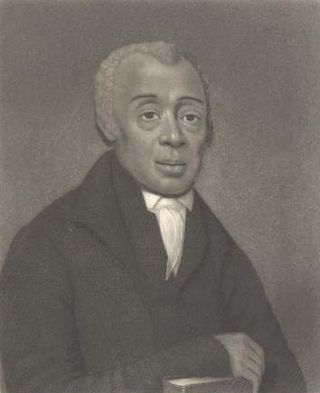
Richard Allen was a minister, educator, writer, and one of the United States' most active and influential Black leaders. In 1794, he founded the African Methodist Episcopal Church (AME), the first independent Black denomination in the United States. He opened his first AME church in 1794 in Philadelphia.
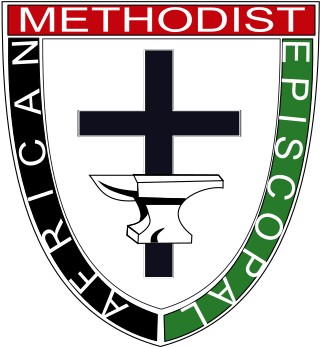
The African Methodist Episcopal Church, usually called the AME Church or AME, is a predominantly African American Methodist denomination. It adheres to Wesleyan-Arminian theology and has a connexional polity. The African Methodist Episcopal Church is the first independent Protestant denomination to be founded by black people; though it welcomes and has members of all ethnicities.
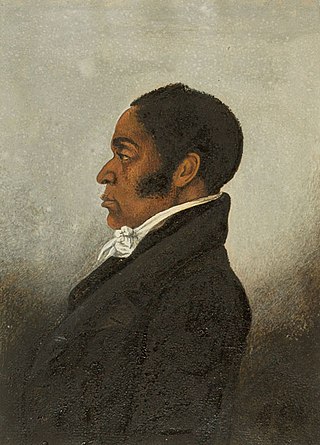
James Forten was an African-American abolitionist and wealthy businessman in Philadelphia, Pennsylvania. Born free in the city, he became a sailmaker after the American Revolutionary War. Following an apprenticeship, he became the foreman and bought the sail loft when his boss retired. Based on equipment he himself had developed, he established a highly profitable business. It was located on the busy waterfront of the Delaware River, in an area now called Penn's Landing.
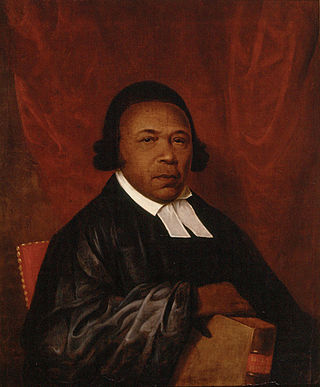
Absalom Jones was an African-American abolitionist and clergyman who became prominent in Philadelphia, Pennsylvania. Disappointed at the racial discrimination he experienced in a local Methodist church, he founded the Free African Society with Richard Allen in 1787, a mutual aid society for African Americans in the city. The Free African Society included many people newly freed from slavery after the American Revolutionary War.

The Mother Bethel African Methodist Episcopal Church is an historic church and congregation which is located at 419 South 6th Street in Center City Philadelphia, Pennsylvania, USA. The congregation, founded in 1794, is the oldest African Methodist Episcopal congregation in the nation.

George Thatcher was an American lawyer, jurist, and statesman from the Maine district of Massachusetts. His name sometimes appears as George Thacher. He was a delegate for Massachusetts to the Continental Congress in 1787 and 1788. He was an associate justice of the Massachusetts Supreme Judicial Court from 1801 to 1824.
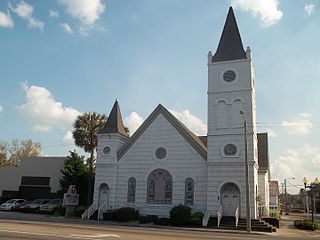
The black church is the faith and body of Christian congregations and denominations in the United States that minister predominantly to African Americans, as well as their collective traditions and members. The term "black church" can also refer to individual congregations.

William White was the first and fourth Presiding Bishop of the Episcopal Church of the United States, the first bishop of the Diocese of Pennsylvania (1787–1836), and the second United States Senate Chaplain. He also served as the first and fourth President of the House of Deputies for the General Convention of the Episcopal Church.

The Episcopal Diocese of Pennsylvania is a diocese of the Episcopal Church in the United States of America encompassing the counties of Philadelphia, Montgomery, Bucks, Chester and Delaware in the state of Pennsylvania.

St. Peter's Church is a historic Episcopal church located on the corner of Third and Pine Streets in Philadelphia, Pennsylvania. It opened for worship on September 4, 1761 and served as a place of worship for many of the United States Founding Fathers during the period of the Continental Congresses. The building was designated a National Historic Landmark in 1996. The church remains an active parish; the current rector is the Rev. Claire Nevin-Field.

St. George's United Methodist Church, located at the corner of 4th and New Streets, in the Old City neighborhood of Philadelphia, is the oldest Methodist church in continuous use in the United States, beginning in 1769. The congregation was founded in 1767, meeting initially in a sail loft on Dock Street, and in 1769 it purchased the shell of a building which had been erected in 1763 by a German Reformed congregation. At this time, Methodists had not yet broken away from the Anglican Church and the Methodist Episcopal Church was not founded until 1784.

During the 1793 Yellow Fever epidemic in Philadelphia, 5,000 or more people were listed in the official register of deaths between August 1 and November 9. The vast majority of them died of Yellow Fever, making the epidemic in the city of 50,000 people one of the most severe in United States history. By the end of September, 20,000 people had fled the city, including congressional and executive officials of the federal government. Most did not return until after the epidemic had abated in late November. The mortality rate peaked in October before frost finally killed the mosquitoes and brought an end to the outbreak. Doctors tried a variety of treatments but knew neither the origin of the fever nor that the disease was transmitted by mosquitoes.
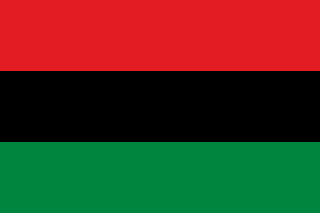
Black nationalism is a type of racial nationalism or pan-nationalism which espouses the belief that black people are a race, and seeks to develop and maintain a black racial and national identity. Black nationalist activism revolves around the social, political, and economic empowerment of black communities and people, especially to resist their cultural assimilation into white culture, and maintain a distinct black identity.

David Bustill Bowser was a 19th-century African-American ornamental artist and portraitist.

A Short Account of the Malignant Fever (1793) was a pamphlet published by Mathew Carey about the outbreak of the Yellow Fever epidemic Yellow Fever Epidemic of 1793 in Philadelphia in the United States. The first pamphlet of 12 pages was later expanded in three subsequent versions. Local black leaders Absalom Jones and Richard Allen thought that Carey's account did not give sufficient credit to black residents who volunteered as nurses during the outbreak, and published a counter-narrative, “A Narrative of the Proceedings of the Black People During the Late Awful Calamity in Philadelphia (1794). Carey agreed with their assessment and revised his pamphlet a fourth time to present that view.

Gertrude Emily Hicks Bustill Mossell was an African-American journalist, author, teacher, and activist. She served as the women's editor of the New York Age from 1885 to 1889, and of the Indianapolis World from 1891 to 1892. She strongly supported the development of black newspapers and advocated for more women to enter journalism.
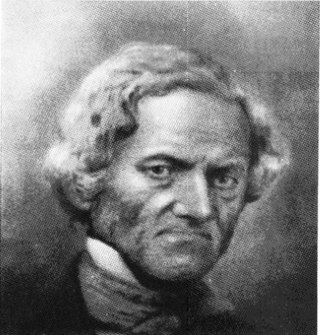
John Pierre Burr was an American abolitionist and community leader in Philadelphia, Pennsylvania, active in education and civil rights for African Americans. He was an illegitimate child of Aaron Burr, the third U.S. Vice President, and Mary Emmons, a Haitian governess who may have been born in Calcutta, India.
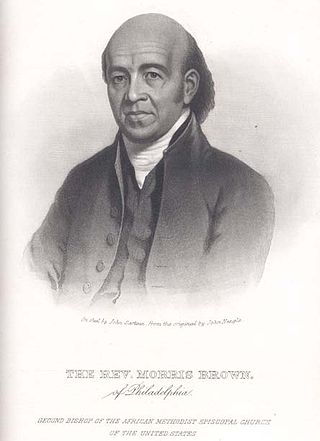
Morris Brown was one of the founders of the African Methodist Episcopal Church, and its second presiding bishop. He founded Emanuel AME Church in his native Charleston, South Carolina. It was implicated in the slave uprising planned by Denmark Vesey, also of this church, and after that was suppressed, Brown was imprisoned for nearly a year. He was never convicted of a crime.

John Berry Meachum (1789–1854) was an American pastor, businessman, educator and founder of the First African Baptist Church in St. Louis, the oldest black church west of the Mississippi River. At a time when it was illegal in the city to teach people of color to read and write, Meachum operated a school in the church's basement. Meachum also circumvented a Missouri state law banning education for black people by creating the Floating Freedom School on a steamboat on the Mississippi River.

This article documents the history of African-Americans or Black Philadelphians in Philadelphia.
References
- ↑ Butler, Anne S. (March 11, 2005). "Fraternal and Benevolent Societies in Nineteenth-Century America". In Brown, Tamara L.; Parks, Gordon; Phillips, Clarenda M. (eds.). African American Fraternities and Sororities: The Legacy and the Vision. University Press of Kentucky. ISBN 0813123445.
- ↑ Minkah Makalani. "Pan-Africanism". The New York Public Library / Schomburg Center for Research in Black Culture (Africana Age: African and African Diasporan Transformations in the 20th Century), a project of the Schomburg-Mellon Humanities Summer Institute, funded by the Andrew W. Mellon Foundation. Retrieved January 5, 2014.
- ↑ Wilder, Craig Steven (2005). In The Company Of Black Men: The African Influence on African American Culture in New York City. NYU Press. ISBN 9780814793695.
- ↑ "Preamble (1778) and Articles of the Free African Society, 1787". explorepahistory.com. Retrieved July 18, 2017.
- ↑ Yee, Shirley (February 10, 2011). "Free African Society of Philadelphia (1787- ?)". www.blackpast.org. Retrieved July 19, 2017.
- 1 2 3 "Philadelphia", Part 3: 1791-1831/"Brotherly Love," Africans in America, 1998, PBS. Retrieved March 16, 2012.
- ↑ American Daily Advertiser, September 2, 1793.
- 1 2 3 Allen, Richard (1794). "A Narrative of the Proceedings of the Black People during the late awful calamity in Philadelphia, in the year 1793: and a refutation of some censures, thrown upon them in some late publications". Harvard University. Philadelphia: William W. Woodward. Retrieved January 31, 2012.
- ↑ "Preamble of Free African Society", Africans in America, PBS-WGBH. Retrieved March 31, 2011